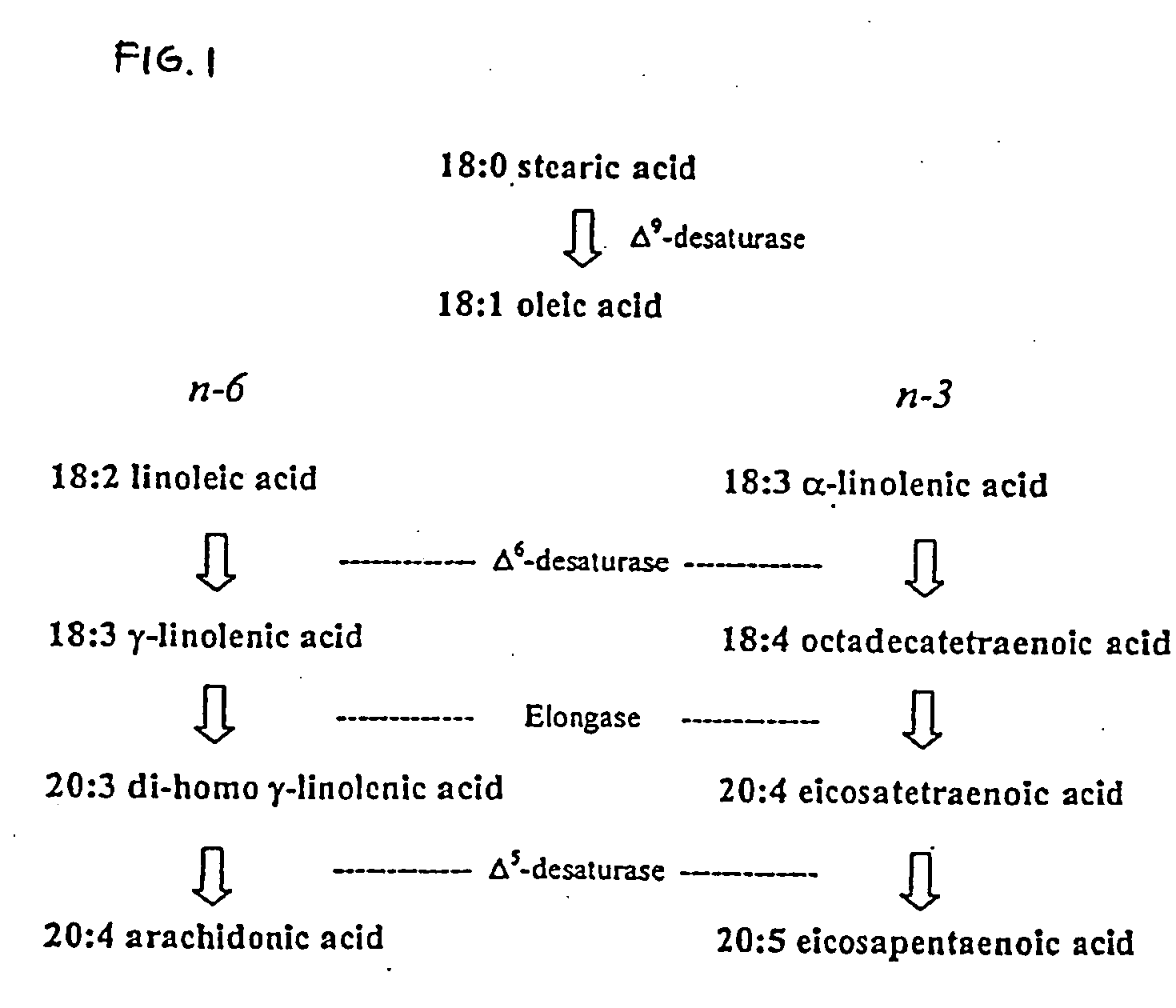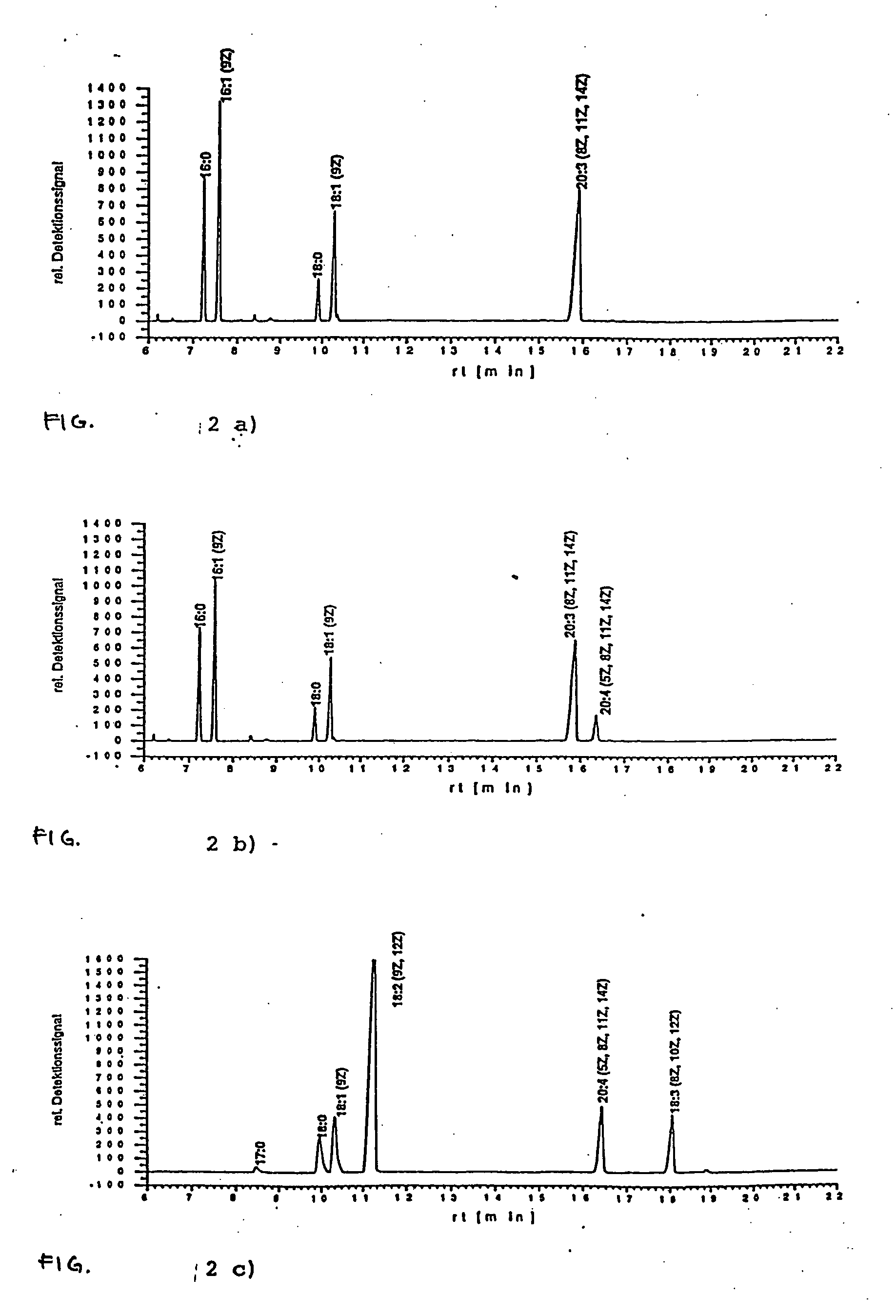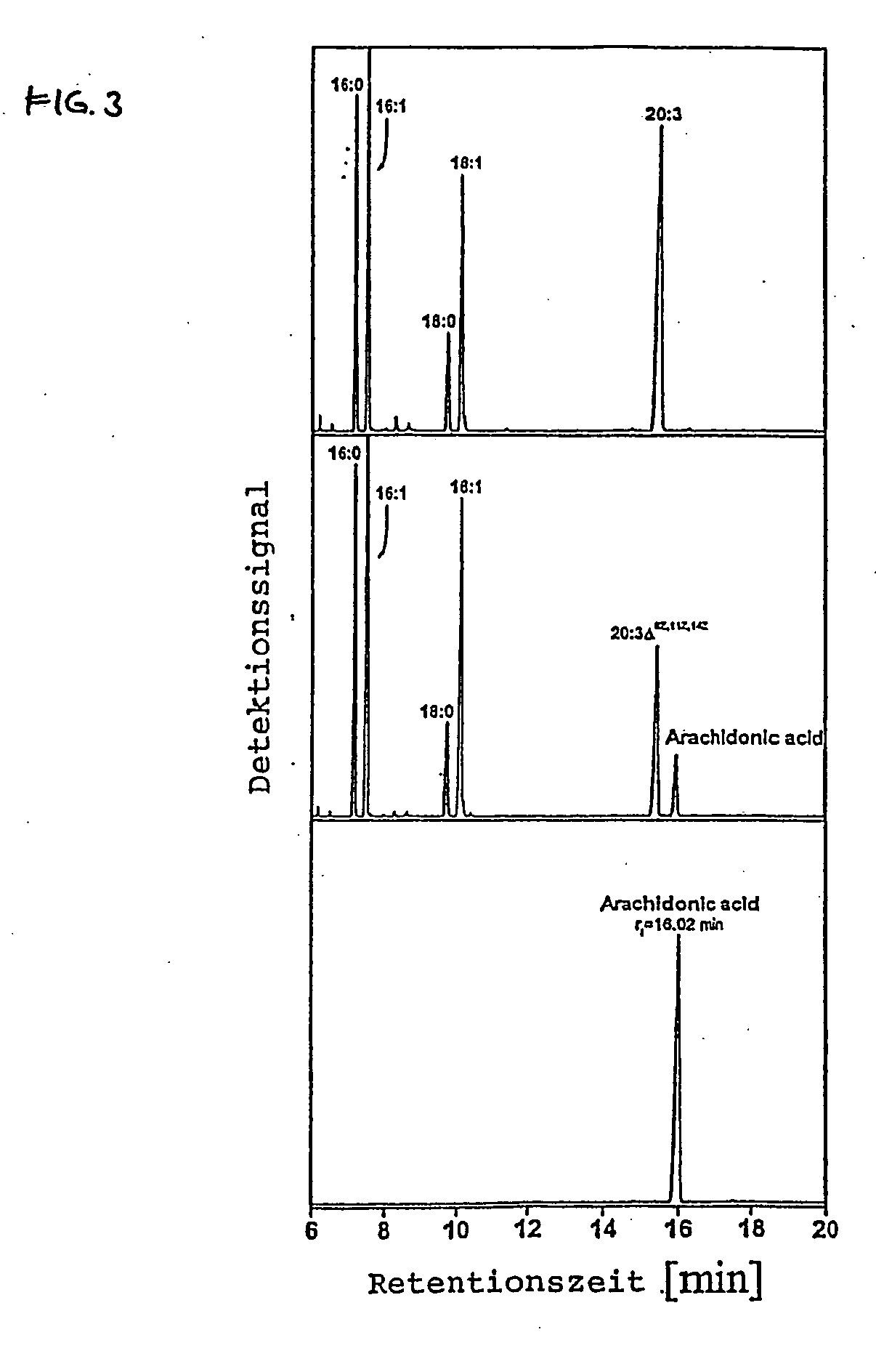Method for producing arachidonic acid in transgenic organisms
a technology of arachidonic acid and transgenic organisms, which is applied in the direction of plant cells, enzymes, sugar derivatives, etc., can solve the problems of difficult human use of many of these sources and inability to produce enzymes,
- Summary
- Abstract
- Description
- Claims
- Application Information
AI Technical Summary
Benefits of technology
Problems solved by technology
Method used
Image
Examples
example 1
Isolation of a cDNA Coding for a Δ5-desaturase from Phytophthora megasperma
[0105] Poly(A)+-RNA was isolated from 2 days old Phytophthora megasperma mycelia that had been cultivated on an oleate-containing medium (Oligotex-dT mRNA Maxi Kit, Qiagen, Hilden, Germany). cDNA synthesis was then performed using 5 μg of the poly(A)+-RNA and the Superscript™ cDNA synthesis kit from LifeTechnologies (Eggenstein, Germany). The obtained cDNA had asymmetrical ends. The cDNA was then ligated into the plasmid pSPORT-1 (LifeTechnologies, Eggenstein, Germany) that had already been cut with the restriction enzymes SalI and NotI. The ligation was performed using T4 ligase according to the manufacturer's protocol (LifeTechnologies).
[0106] Cells of the E. coli strain XL1-Blue were then transformed with the ligation mixture, i.e. the cDNA ligated into pSPORT-1 by electroporation, and plated on LB plates containing ampicillin, so that 10,000 to 15,000 colonies grew on each agar plate having a diameter o...
example 2
Expression of the Δ5-Desaturase cDNA Clone in Yeast
[0110] First of all, the cDNA clone was cloned into the yeast expression vector pYES2 (Invitrogen, Groningen, Netherlands). This was carried out using the following oligonuclotide primers:
(SEQ ID NO. 5)5′-GGA TCC ATG GCC CCC ATC GAG ACT GTC AAA G3′(primer a)and(SEQ ID NO. 6)5′-GCA TGC CCC GCG TTA TCC AGC CAA AGC TTA CC3′(primer b)
[0111] Primer a contains a restriction site for BamHI (underlined), primer b contains a restriction site for the restriction enzyme SphIb (underlined).
[0112] The PCR was carried out according to the following PCR protocol:
[0113] Set up for PCR reaction:
dNTP mix1μl5′-primer (primer a)4μl3′-primer (primer b)4μltemplate1μlplasmid DNA (10 ng)polymerase0.5μlhigh fidelity, Roche Diagnostics GmbH10 × buffer5μlwater34.5μltotal volume50μl
[0114] The PCR was performed under the following conditions: [0115] 2 min 94° C. [0116] 10 cycles, each with: 30 seconds at 94° C., 30 seconds at 55° C., 1 minute at 72° C. [...
example 3
Expression in Yeast Cells
[0125] All yeast techniques are state of the art according to Ausubel et al., Current Protocols in Molecular Biology, 2000.
[0126] Pre-culture: 20 ml SD medium+glucose+amino acid solution without the respective amino acid for the selection were inoculated with a single colony, incubated overnight at 30° C. and shaken at 140 rpm.
[0127] Main culture: The pre-culture was washed twice (by centrifugation and resuspension) in SD medium without sugar, and the main culture is then inoculated to an OD600 of 0.1-0.3. Cultivation of the main culture was performed in SD medium+galactose+amino acid solution without the respective amino acid+fatty acid, Tergitol NP40 (10%) at 30° C. for 72 h with shaking at 140 rpm. Harvesting of the main culture was performed by centrifugation in 50 ml sterile centrifuge tubes.
[0128] Lyophilization of the yeast cell pellet: Frozen cell pellets were lyophilized for approx. 18 h.
PUM
 Login to View More
Login to View More Abstract
Description
Claims
Application Information
 Login to View More
Login to View More - R&D
- Intellectual Property
- Life Sciences
- Materials
- Tech Scout
- Unparalleled Data Quality
- Higher Quality Content
- 60% Fewer Hallucinations
Browse by: Latest US Patents, China's latest patents, Technical Efficacy Thesaurus, Application Domain, Technology Topic, Popular Technical Reports.
© 2025 PatSnap. All rights reserved.Legal|Privacy policy|Modern Slavery Act Transparency Statement|Sitemap|About US| Contact US: help@patsnap.com



